This week, the world of parasites. We find out what's living in you and on you, how these invaders hijack your immune system and how they can even control the behaviours and body shapes of their hosts. Plus, in the news, the oldest remains of our first human ancestors are uncovered in Ethiopia, scientists weigh a stegosaurus and NASA's Dawn probe reaches the dwarf planet Ceres, but what awaits it there...?
In this episode
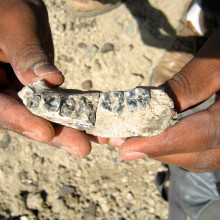
00:57 - Earliest human fossil found
Earliest human fossil found
with Professor William Kimbel, Arizona State University
Fossils of our genus, Homo, had previously only been found dating back to about 2.4 million years ago. Older fossils, like the famous female specimen called "Lucy" are from a more primitive lineage called Australopithecus. 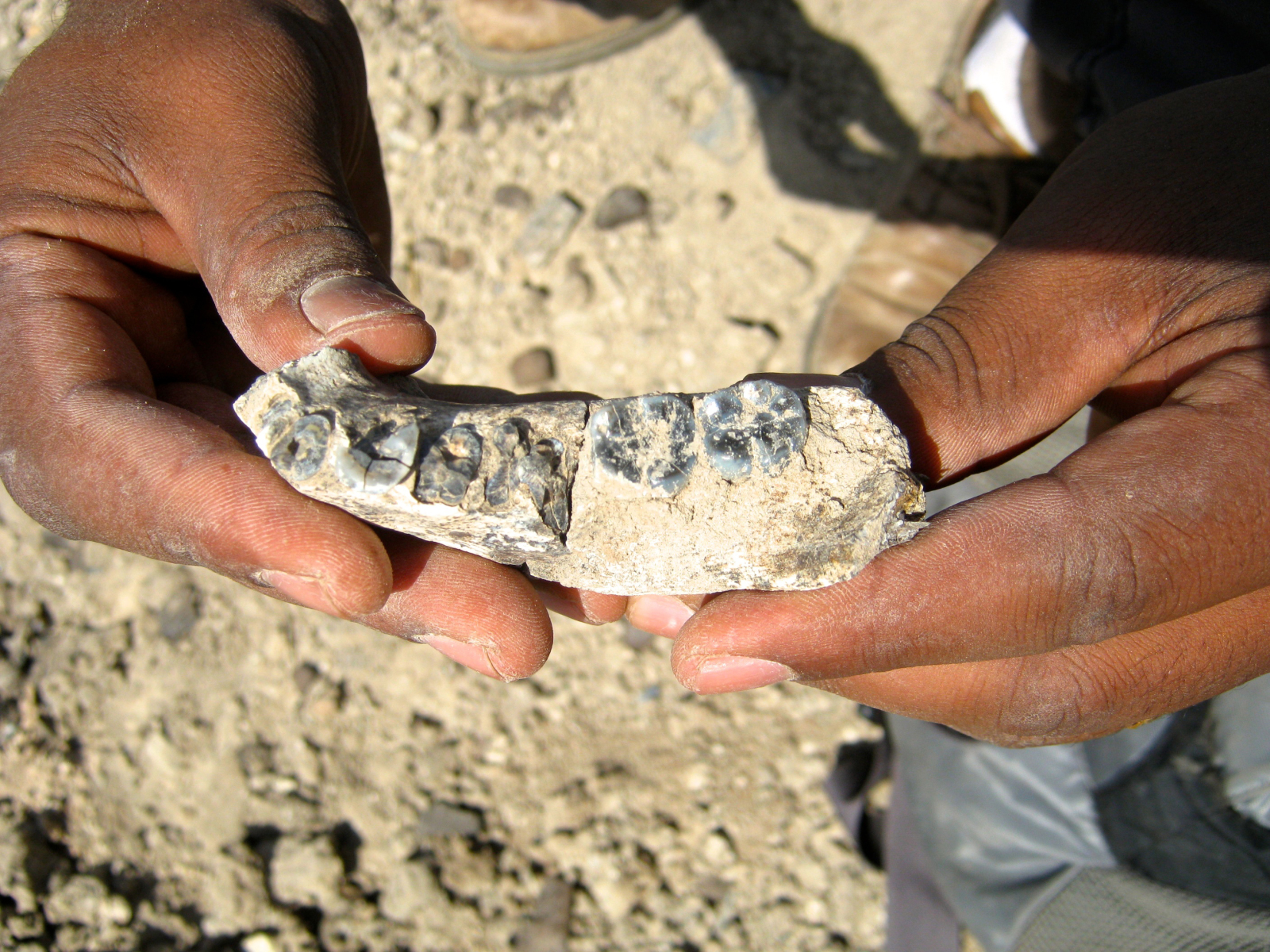 Now, scientists working in Ethiopia have uncovered evidence suggesting the species that gave rise to modern humans is older than we thought. Speaking to Chris Smith, Bill Kimbel is one of the team that made the discovery...
Now, scientists working in Ethiopia have uncovered evidence suggesting the species that gave rise to modern humans is older than we thought. Speaking to Chris Smith, Bill Kimbel is one of the team that made the discovery...
Bill - The specimen was found by an Ethiopian graduate student of ours, a man by the name Chalachew Seyoum in January 2013 at a site known as Ledi-Geraru. This is in the Ethiopian part of the East African Rift Valley. He was part of a field survey project. They, as is commonly the case, identified a very specific area of exposed sedimentary rock to survey or explore one morning and focused on a hillside which was dotted by freshly eroded bones. It's a very rich hillside. Chalachew was walking up the slop of this hill, rather steep hill and near the top, he spotted just poking out of the loose eroded sediment, a premolar tooth situated in a fragment of jaw that our team is attributing to one of the earliest known representatives of the genus Homo at about 2.8 million years ago.
Chris - How do you know how old that specimen is?
Bill - In eastern Africa, we're fortunate that the sites are in a rift valley setting and the east African rift valley over millions of years has been tectonically very active with many volcanoes. Back in the time of the Ledi-Geraru early Homo, ash was erupted and coated the landscape and that ash layer was incorporated into the growing stacks of sediments being deposited by streams along their banks. We now move forward to 2013, the spot at which the jaw was found was located about 10 metres above this volcanic ash layer. That layer, thanks to radio-isotopic techniques of dating, that ash layer was nailed down at 2.82 million years ago. The jaw being located just 10 metres above it obviously will be very slightly younger and we calculate, the most likely age of the jaw is between 2.75 and 2.79 million years old or thereabouts.
Chris - What does the fragment actually look like? What does it comprise?
Bill - The jaw consists of the left side of the lower jaw or mandible with all three of its molars, in front of the molars, both of its premolars, a little tiny bit of the canine tooth, but mostly it's root in place. And then the sockets of the front two teeth, the two incisors, broken just about in the midway through the chin so that we can actually create a lovely mirror image of the entire jaw by reflecting around the middle of the chin.
Chris - What does this actually mean though? What are the implications of having found this jaw in terms of what we now understand about our own origins and our ancestor's origins?
Bill - I think we can say with a fair degree of confidence that the earliest representatives of the line leading directly to Homo sapiens, our own species, split off from a more primitive Lucy-like Australopithecus ancestor between 2.8 and 3 million years ago. That's a good 4/500,000 years earlier than we could have said before this jaw was discovered. So, we've pushed the origin of our lineage back by about half a million years.
Chris - Given that you can finger out origins more precisely in this way, is there anything else in the fossil record or the climate record that was happening around that time that you think might therefore have stimulated our early ancestors to evolve to become these creatures?
Bill - Well, one of the favourite tropes of palaeoanthropology today is to attribute all kinds of changes in human evolution, ultimately to changes in global climate. This period of time is no exception. We understand that the continent of Africa beginning around 2.8 or 2.7 million years ago, the environment began to change. It became more seasonal. It became more open and arid. Indeed, Dr. Kaye Reed and the other palaeontologists on the project have scrutinised the animal fossils found alongside the early Homo individual. And they've determined that these animals formed a community that was in fact living in a relatively arid environment compared to those occupied by Lucy and her kin just a couple of hundred thousand years before in the same area. So this, at least on the surface, is consistent with the idea that early Homo was able to occupy environments that were not populated by its ancestors. Whether or not climate eventually played a role in the actual origin of the Homo lineage will depend on discoveries we will hope to make moving back from 2.8 million years towards Lucy at about 3 million years. So, we can stay tuned for further discoveries on that point.

07:03 - Dawn probe reaches Ceres
Dawn probe reaches Ceres
with Dr Carolin Crawford, University of Cambridge
After a 7-and-a-half year journey, NASA's Dawn spacecraft is finally in orbit around the asteroid Ceres. Ceres is the largest of the bodies in the asteroid belt out beyond Mars, and scientists hope  it will be able to tell us something about how planets like the Earth were formed. Carolin Crawford is from the Institute of Astronomy in Cambridge and helped shed some light on the mission for Chris Smith...
it will be able to tell us something about how planets like the Earth were formed. Carolin Crawford is from the Institute of Astronomy in Cambridge and helped shed some light on the mission for Chris Smith...
Carolin - The asteroid belt is this enormous swarm of rocky, icy objects that live out between the orbits of Mars and Jupiter. So, you're talking about just over two to three times farther out from the Sun than Earth lies. They're basically debris. They're left over from the early stages of the formation of the solar system. They're kind of like chunks of a planet that failed to coalesce. There was supposed to be a planet between Mars and Jupiter, but you've got the gravity of Jupiter, kept stirring up all those rocks but they never got their act together. They never formed a planet. And so, they're of interest because they're telling us something about that early solar system.
Chris - So, if we study those rocky bodies, we learn something about the evolutionary history of how planets put themselves together 4.5 billion years ago.
Carolin - The thing about most of the asteroids is they're very small. They go down to tens of meters and there are just a few that are perhaps hundreds of kilometres across. If you have an object that size, it doesn't undergo all the sort of geological processing that the major planets that hasn't had tectonic plate processing, hasn't had all the kind of geochemical activity. So, most of the asteroids remain almost like pristine chunks of that very primitive material that went into the solar system. So, you were just talking about fossils. In a way asteroids are the fossils for our solar system and we look back at those and we can see what the ingredients were to make the planets we have today.
Chris - Ceres is something of an outlier then given that it's about a thousand kilometres across sitting in amongst this debris field.
Carolin - It's an interesting one and you may regard it more as a failed protoplanet. This is why it's interesting because it's got that - it's the bridge between those small pristine asteroids and the major planets, maybe this did get further along in the development and maybe it reached the protoplanet stage before it then failed to continue. Because it's that size, as you say, just under a thousand kilometres across is good enough gravity that it's pulled itself into a sphere, it's undergone some of that geological processing, it's undergone what we call differentiation. It has a core, it has a mantle it has a crust. And so, it's kind of gone somewhere along the way to being a planet but not quite.
Chris - Dawn didn't go straight to Ceres though, did it, because it took in Ceres's smaller sister, Vesta, on the way, a few years ago?
Carolin - That's right. Between 2011 and 2012, it spent a year in orbit around Vesta which is the next largest object in the asteroid belt. That's not big enough to really be a dwarf planet. But it still is a protoplanet. It's only just over 500 kilometres across and it forms an interesting contrast to Ceres. It's slightly closer into the sun than Ceres is. It's a less icy body. It's got a metallic core. One of the things that's fascinating to scientists about this whole mission is to be able to compare two so different protoplanets. Why is one a much more wet object? Ceres has got ice and rock whereas Vesta really doesn't. It's much more metallic and rock. What are the differences between the two planets? How can you count for them being more or less the same part of the solar system, but yet, having had quite different histories?
Chris - I know everyone is saying this week or so has just gone by - that Dawn has arrived at Ceres. But this is only really the beginning isn't it because now, it's got to establish itself in a much lower orbit than it is now in order to do this surface survey it's going to do.
Carolin - Well, we had some fantastic views of Ceres as it was approaching around about sort of mid-February. It effectively overshot the dwarf planet and then it's approached it from the dark side and as you say, it's got to manoeuvre itself into a closer orbit and get around to the sunlit side. So, we're not going to fantastic images probably for a few weeks now until the end of April. It's going to start out in orbit about 4,000 kilometres away and over the next year and a half, work spiralling closer and closer and so, it can then map the surface from down to about a few hundred kilometres away. And get more and more detail about those features that we're beginning to see.
Chris - And just very briefly, what is it actually going to be scrutinising the surface to see or how is it going to examine the surface?
Carolin - Well obviously, they're going to be taking images and spectroscopy of the light reflected from the surface. They'll be looking at the geology of the surface, but there also going to be sensing any variations in the gravitational response of the spacecraft from the dwarf planet as telling us something about the internal structure and help us to kind of dissect what the core is like. And also, whether there are possibilities that it does have a substantial fraction of ice or even possibly water underneath that crust.
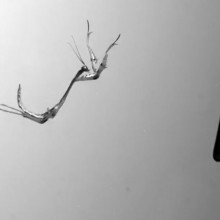
11:58 - How to pounce like a praying mantis
How to pounce like a praying mantis
with Professor Malcolm Burrows, University of Cambridge
How do falling cats always always manage to land on their feet? And why does toast tend to end up butter-side down? It's all down to how things spin. This is more important than it might sound- it could help us to build robots that can jump accurately from one place to another, something that's a major challenge right now. Cambridge University scientist Malcolm Burrows and his colleagues have been watching something else that is an expert at jumping- the praying mantis. Khalil Thirlaway went to meet him...
Malcolm - In their natural habitat, they live amongst the stems of plants or the branches of trees. When they're young, they don't have any wings. So, if they're on these branches, the only way to get to another branch basically is to jump. So, we arranged them to stand on a platform and gave them this small black rod that's a target to which they could jump. They would jump reliably time after time to this target. And that enabled us to then film these jumps about a thousand frames a second and that enabled us to slow the time down sufficiently so that we could resolve the intricate movements that they were making during this very rapid movement.
Khalil - So, how are they generating this power, also with this accuracy of landing every single time?
Malcolm - First of all, what they do is they sit on their platform and they scan the target by moving their head backwards and forwards seemingly to estimate the distance that they've got to jump. Then they prepare themselves for jumping, adjusting the centre of mass of their body by curling their abdomen over the top of the body so that when the middle legs and the hind legs provide the propulsive force for a jump, there is a spin imparted to the body as it takes off. Once they're airborne, they have to regulate the amount of spin that the body is going through so that it's correctly oriented at the right angle to be able to land with all their legs and grab hold of the target. So, how do they control this spin? Once they're airborne, there's nothing to push against except the air. They don't have wings. Well, they go for this intricate sequence of movements in which they rotate the front legs, the hind legs and the abdomen in different directions and in different combinations throughout the jump. This rotation of these limbs and the abdomen stores angular momentum and means that the body itself doesn't rotate as much and remains stable and in the correct orientation for landing on the target.
Khalil - How do we know that these movements are actually fine-tuning the mantis's angle?
Malcolm - We have two approaches to doing that. first of all, we built a model. Not an artificial model of a mantis, but a mathematical model of what the body is doing. And then we could say, well, what happens if one of these parts of the body does not move? First thing we did was to say, "Well, what happens if the abdomen does not curl up?" the answer to that was, that it didn't impart the necessary spin onto the body. What in fact happened without the abdominal rotation was that it went headfirst into the target and just head butted the target and then sort of slipped off.
Khalil - That's not quite as graceful as the previous scenario.
Malcolm - Not at all and that was just messing up with one part of the body. And it told us a lot about the mechanisms that were underlying these movements. The second thing was to experimentally interfere with the movements. So, one of the experiments we did was to glue the segments of the abdomen together so that it couldn't curl up as much. Again, what happened there was that it crashed into the target because it couldn't rotate its body enough.
Khalil - Now we understand the mechanics of how the mantis fine-tunes its orientation in the jump, how do you think this could be applied in other areas of research?
Malcolm - Well, I think it has intrinsic value of its own to start with. This is a very complicated movement and the mantis has come up with some intricate mechanisms of how to solve the issue. But the application could be in robotics. One of the things that roboticists are trying to do is to build robots that can actually jump. One of the huge design problems that they face in doing that is that once the robot has left the ground, it tends to spin uncontrollably.
Khalil - So, it seems that jumping isn't the problem. It's getting robots to land safely which is the big problem.
Malcolm - That's right. it's getting them to be stable in the air. So, taking some of the mechanisms that the mantis use is, should enable roboticists to programme their robots much more reliably and give them stability once they're in the air.
Khalil - This seems like, yet, another example of taking inspiration from nature which just had billions of years to evolve and applying it to our problems.
Malcolm - Well that's right. we've only been trying to design things ourselves for a few tens of hundreds of years. So, why not take advantage of what's gone before us, billions of years of history providing solutions that may be of use in our designs.

17:13 - FameLab: The natural nuclear reactor
FameLab: The natural nuclear reactor
with Paul Clarkson, University of Cambridge
Cambridge is currently in the run up the local FameLab final! FameLab is a  competition where scientists battle it out to be the best at giving engaging short talks on their favourite areas of research. Paul Clarkson chose to do his three-minute talk on a natural nuclear reactor, as he explains to Ginny Smith...
competition where scientists battle it out to be the best at giving engaging short talks on their favourite areas of research. Paul Clarkson chose to do his three-minute talk on a natural nuclear reactor, as he explains to Ginny Smith...
Paul - Hi, how are you doing?
Ginny - So, tell me about your work. You're a PhD student. Is that right?
Paul - Yeah, that's correct. I'm currently doing a PhD in the application of face change materials. So, it's to do with nanofabrication, things on the very small scale and taking advantage of what they actually can do, which is change between an amorphous to crystalline state.
Ginny - So, making very tiny materials that can change with temperature and that sort of thing.
Paul - Exactly.
Ginny - What are you going to be talking about in FameLab?
Paul - I'm actually going to be talking about our nuclear fission reactor?
Ginny - What made you choose that?
Paul - I used to be in a past life a nuclear research scientist before my PhD. As soon as you mention the word 'nuclear', it can become quite divisive. So, I like to be able to expel a lot of those belileved demons on it.
Ginny - Well, you've got me interested. So, you've got a 3-minute talk that you're going to do for us now. I think that's right?
Paul - That's correct.
Ginny - Okay, when you're ready, off you go...
Paul - Who listening has misplaced something? I have, my car keys. They go missing a lot. I accuse my housemates who are trying to sabotage my life and it can be quite annoying especially if you know you have to get somewhere important like KFC before it closes.
However, in the grand scheme of things, this is pretty trivial. But not everything that goes missing is trivial.
Imagine you are a French scientist in 1972 in Africa. You're working at the Oklo Uranium Mine and you have just calculated that roughly 200 kilograms of uranium 235 is missing. That's enough to make 6 nuclear bombs. Naturally, this raised a few eyebrows and the scientist tried to think of where it was. But they were never going to find it. The answer was right under their noses literally.
The uranium no longer existed as it had been burned up. That's right. the scientists were in fact, standing on an ancient natural nuclear fission reactor. But how is this possible?
Well, 3 key ingredients are needed for a nuclear reactor. One, you need fissionable material. This material is made up of atoms whose nucleus - a fat mass of protons and neutrons - will split into smaller nuclei and release energy when it absorbs neutron. Two, you need neutrons in order to keep the reaction going and three, you need a moderator - something that can help control the rate of the nuclear reaction. It slows down neutrons and allow them to be absorb by the fissionable material.
And it turns out that 2 billion years ago, Oklo had all of these things. One, it had a large concentration of uranium 235, which is the fissionable material. Two, it had neutrons provided by normal radioactive decay of surrounding rocks. And most importantly, three, it had water. Water is excellent in slowing down neutrons.
And so with this mix, Oklo was able to sustain nuclear reactions for over 200,000 years with an average power rating of about 100 kilowatts. That's enough to keep a few hundred kettles powered for eons. So, why is this relevant today? Scientists and geologists have been investigating the movement of the fission waste from the Oklo reactor over this time period, one of the key things needed to be understood for a nuclear waste depository. What has been found is that the nuclear waste hasn't travelled more than a few centimetres over 2 billion years.
That is remarkable. That's without intelligent design or human engineering. Nature has yet again provided a potential solution and it just goes to show that sometimes when you look for something that is missing, you can in fact find something that is far more valuable.
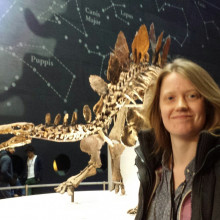
20:43 - How do you weigh a dinosaur?
How do you weigh a dinosaur?
with Dr Charlotte Brassey, Natural History Museum
In December 2014, London's Natural History Museum unveiled an amazing 150 million year old Stegosaurus fossil, named Sophie.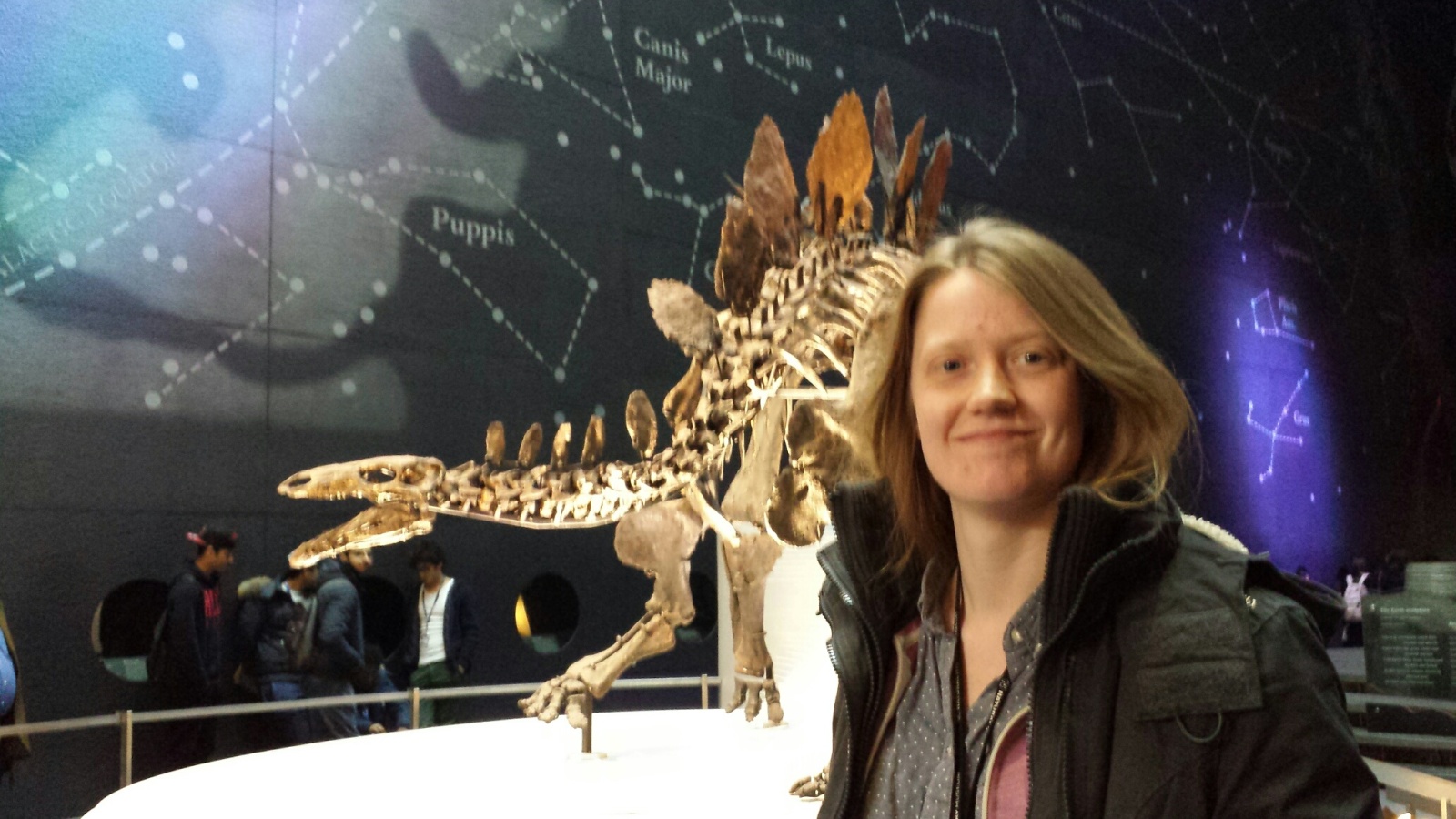 Standing proudly in the museum's Earth Hall, Sophie is a big attraction for visitors. But that's not the only thing that's big about her - as Kat Arney discovered when she went to meet the researcher who's dedicated the past year to studying the skeleton, Charlotte Brassey...
Standing proudly in the museum's Earth Hall, Sophie is a big attraction for visitors. But that's not the only thing that's big about her - as Kat Arney discovered when she went to meet the researcher who's dedicated the past year to studying the skeleton, Charlotte Brassey...
Kat - So, we're here in the Natural History of Museum. Lots of people around us and this beautiful skeleton here, introduce me to this lady.
Charlotte - So, this is Sophie the Stegosaurus, and she is 155 million years old. She's come all the way from Wyoming in the US and she is arguably the most complete Stegosaurus skeleton ever found. What's particularly exciting about her is the skull. The skull is entirely intact. The one in display is plastic but we've got the real one in the basement and we're still studying it.
Kat - Well, let's go and learn a little bit more about what you've been doing to understand more about what she look like maybe in the actual flesh.
Charlotte - So, this is the stores where we keep all the dinosaurs.
Kat - Tell me how you're studying Sophie to try and work out a bit more of what she looked like in real life.
Charlotte - My background is in computer modelling, so what I've done in the last year, I've created a 3D computer model of every single bone in Sophie's body. From that, we can then begin to estimate things like body mass. We reconstruct how the muscles would've been placed across the skeleton, we're looking at reconstructing how she would've walked, and also reconstructing the jaw muscles on her skull to look at what she could've eaten.
Kat - Obviously, when we see dinosaurs in museums, they are all these bones. Paint me a picture of what you think she might have looked like in the glorious flesh.
Charlotte - Well, the interesting thing about dinosaurs in general is the group of muscles that they use to kind of pull their leg backwards as they move are very different to that what we see in modern mammals. So, you can see from Sophie, she's got a very long tail and she would've had very bulky muscles attaching a longer tail onto the back of her legs. Actually, if you go up on a balcony and you look from the top down on Sophie, you'll see that she's got very, very wide hips. So, those two facts combined, she would've had quite an impressive rear end.
Kat - A hefty bulk.
Charlotte - Yes.
Kat - How do you start working out how big a Stegosaurus was and maybe how much she weighed?
Charlotte - In the past, people have based it on simple measurements of the leg bones. So typically, you would go into a museum collection full of modern animals. So, modern mammals and birds and crocodiles. And you would do something like you'd measure the length of the thigh bone or maybe the circumference around the middle of the thigh bone. And then you would also - knowing the body mass of the modern animal, you plot that on a simple scatter plot. So, you plot body mass against this measure, look at bone length say, and you put a straight line through it, and you would then use that line to predict the body mass of fossil animals. So, we could then go and measure say, the length for Sophie's thigh bone or the circumference around the middle of her thigh bone and use that line on our scatter plot and back estimate the body mass of Sophie. That's really useful if all you have in the fossil record are isolated bones. The vast majority of fossil animals that we know of, come from very fragmented remains. We don't have the whole skeleton. What's really exceptional about Sophie is that we've got so much of the skeleton. So, it seems a shame to be reconstructing her body mass from just these simple measurements alone. We wanted to try and use the whole skeleton. So that's where my computer models come in. so, once we've got a computer model of Sophie, I import it into just a simple CAD package like engineers use and then we can wrap very simple shapes around the 3D object of Sophie. Once we've got a volume for Sophie, we can then look at the relationship between body mass and volume in modern animals, and then use that relationship to estimate her body mass based on the whole skeleton.
Kat - How much do you think she might have weighed? What sort of heft was she on the ground?
Charlotte - So, our best guess at the moment is something around 1.6 tons which intuitively seems likely to us. If you actually look at Sophie on display, she is smaller than an elephant. So, you wouldn't be expecting body masses of 3 to 4 tons. She does look something like the size of a rhino and that's about right for a rhino.
Kat - Now that you've started to work this out about Sophie about how much she might have weighed, what she looked like, what next? What do you still want to figure out about her?
Charlotte - So, body mass is really fundamental from where we want to go from here. So, in any kind of equation that I might use for say, estimating how fast she might have moved, maybe reconstructing their metabolism, how much would they have to eat. All those things, all those equations and models require an estimate for body mass. So, that's why we have to get this really nailed down very early on and from that, we can build upon this. So, the thing that I'm working on now is beginning to strap muscles onto my 3D models looking at how efficient her muscles would've been for moving her limbs and then eventually, reconstructing how she would've walked.
Kat - Real life Walking With Dinosaurs.
Charlotte - Exactly, yeah. You've got to get your information from somewhere haven't you?
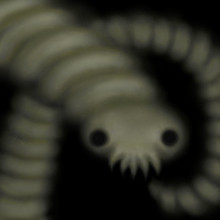
26:26 - The parasitic lifestyle
The parasitic lifestyle
with Professor Mark Viney, University of Bristol
They say there's no such thing as a free lunch, but parasites seem to get away w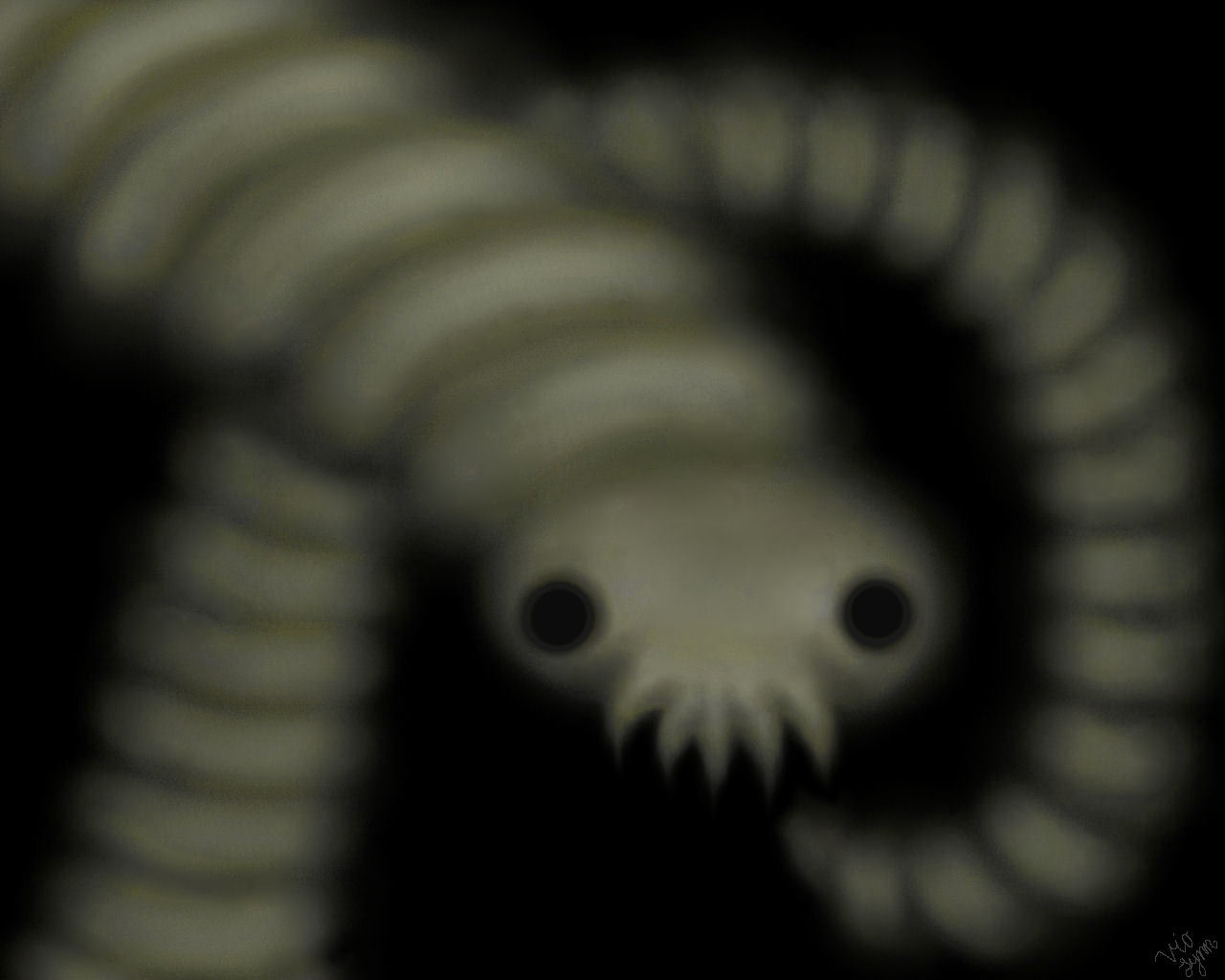 ith leeching off their hosts rent-free. Almost every organism on earth has it's own particular parasite, in fact, it's estimated that up to 50% of the earth's species are parasites. But are parasites getting the sweeter deal, or does this lifestyle come with it's own dangers and pitfalls? And how did parasitism first evolve? Mark Viney from the University of Bristol introduced Chris Smith to the "life parasitic"....
ith leeching off their hosts rent-free. Almost every organism on earth has it's own particular parasite, in fact, it's estimated that up to 50% of the earth's species are parasites. But are parasites getting the sweeter deal, or does this lifestyle come with it's own dangers and pitfalls? And how did parasitism first evolve? Mark Viney from the University of Bristol introduced Chris Smith to the "life parasitic"....
Mark - In a broader sense, a parasite is any organism that lives in or on another organism to make its living. So, this would include things like viruses and bacteria. But when we typically talk about parasites, what we really mean are animals that live in or on other organisms to make a living. And these are things like protozoa which are single-celled animals, an example of that is the malaria parasite. But then multicellular animals also live in and on other animals and plants and these are typically worms that for example very commonly live in the guts of other animals or in other locations in their body. Some of them live on the surface of fish for example and on the gills of fish. But the other sort of parasites as well are ectoparasites which are insects and other arthropods. Things like lice, fleas and ticks.
Chris - How long have these sorts of organisms been around in terms of the evolution of life on Earth?
Mark - I think parasites have been around as long as there's been something to parasitize. I think what we have to remember is that every organism is trying to make a living in quite a tough world. What a host or a potential host species is, is a nice patch of juicy resource waiting to be exploited. Of course, parasites have evolved to exploit those resources, those hosts every time they become present. I guess the proof of that is, any animal or plant that you could care to look at in your garden or that you might see on the television on a David Attenborough programme is actually teaming with parasites. Everyone of those animals will have worms in its guts and it'll have protozoa in its blood and will have ectoparasites on its skin, and that's the normal stage of most animals. That's because, that multitude of parasites, is because it's a very ancient history that has evolved to exploit this rare resource.
Chris - Quite a complicated life story too though, isn't it? so, how would something so complicated as the ability to penetrate another organism, stay there, outwit the immune system of that organism and feed off that organism, how would that evolve in the first place and get started?
Mark - That's a very good question and a tricky area I would say. What one imagines is that organisms destined to become endoparasites or parasites that are living inside organisms actually started off in their evolutionary history to becoming a parasite by living in ever closer association with another organism. So for example, if you go and cut up a snail from the garden, you'll very often find some worms living very closely and intimately on those snails, but they're probably not parasites. So, one imagines that these animals, these potential parasites became ever more intimately associated with parasites before then actually becoming dependent on those parasites. But you're absolutely right. parasites have had to evolve a whole range of adaptations to live inside hosts and to cope with all the challenges that brings which is feeding off the host, surviving the immune response that the host is directing towards those parasites. I think the other thing that is interesting to think about with parasites is, there's a patch of resource that parasites have evolved to exploit. But those patches of hosts are quite separated in the environment. So, there's always a distance between two potential host species for the two host individuals for example. The challenge of moving between hosts is something that parasites have to evolve quite a lot of adaptations to achieve and that's the process of infection in fact.
Chris - Is it fair to say then that if parasites have just evolved to exploit a resource, that parasites themselves can catch parasites? Are there parasites that prey on parasites? Do fleas have fleas?
Mark - Absolutely. Well, we can talk about some of the microparasites, things like viruses but any macroparasites such as worms or protozoa for that matter will also have viruses themselves. They're just another resource to be exploited.
Chris - So quite literally, it carries on ad infinitum, as the rhyme goes, doesn't it...?
Mark - Exactly!
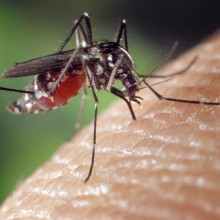
31:06 - Malarial mind-control
Malarial mind-control
with Vicki Austin, London School of Hygiene and Tropical Medicine
One of the ways parasites can get from one host to another is by hitching a ride on a biting insect. For example, the malaria parasite, called Plasmodium, is carried by mosquitoes and transmitted in the insect's saliva every time it feeds on blood. But Plasmodium doesn't just settle for relying on the mosquito's natural feeding habits: scientists have discovered that it also alters the insect's appetite, making it more attracted to certain human smells and increasing the rate of transmission. Khalil Thirlaway went to the London School of Hygiene and Tropical Medicine to hear how...
Khalil - I'm here in my home city of London standing outside the London School of Hygiene and Tropical Medicine. Inside that building is the world's deadliest double-act and I'm about to meet it face to face. But first, I'm going to learn a little bit more from someone who knows this deadly duo inside and out.
Vicki - I work on malaria. Malaria is a disease that kills half a million people every single year. So, it's a huge disease and it affects people by invading their blood cells and bursting them which causes fever and it causes illness. One of the main targets in the fight against malaria is actually the vector, the mosquito that transmits the disease and that's where I come in.
Khalil - I hear that you have a room full of mosquitoes here.
Vicki - That's true actually. Do you want to see?
Khalil - Yes, please. That would be great.
Vicki - Let's go into the insectary.
Khalil - We've stepped into a small dungeon-like room with lots of clear plastic mesh boxes all around. On closer inspection, they're actually full of hundreds of mosquitoes feeding from an electronically warmed blood pack that stop to the top of the mesh box.
Vicki - That's actually my blood....
Khalil - Wow, suffering for your work. That's great! Before we continue, I have to ask, are any of these carrying malaria?
Vicki - Absolutely not. Luckily for you, this is a clean room. So, all of the mosquitoes in here are waiting to be infected.
Khalil - So, we're nice and safe?
Vicki - We're nice and safe here at the moment, yeah.
Khalil - What are you doing with this room full of blood sucking mosquitoes?
Vicki - For years, people have been combating malaria. But most of these control methods, they focus on insecticides or insecticide treated bed nets. But we're coming at it from a new approach. So a mosquito has a really good sense of smell. They could pick up really tiny amounts of certain compounds that are given off by a human body and that's how they find a human to feed on to take a blood meal.
Khalil - What part does the parasite play in this?
Vicki - Well, that's a fascinating part actually. Once the mosquito is infected with Plasmodium, lots of different aspects of this behaviour can change. There are lots of different things such as it is maybe more likely to take a blood meal or it's more likely to take longer to feed. All of these things can increase the chance that it successfully pass on that parasite to a new host. The bit that I'm particularly interested in is that the mosquito is actually more sensitive to specific aspects of human smell and that's what's really fascinating.
Khalil - How do you determine which components of the human smell are attractive or repellent to mosquitoes?
Vicki - Essentially, what we did was electroantennography or EAG and this technique actually involves cutting off mosquito's head and mounting it on an electrode. We pass compounds that we are interested in over the antenna and we measure the electrical impulses when there's no fire and that's how we know whether the compound is exciting to a mosquito.
Khalil - How could this understanding be used in the fight against malaria?
Vicki - One possible application of our work could be to design traps that are more effective and because they're based on those really attractive compounds we identified from people. Potentially, we could even be designing traps that are specific for infected mosquitoes if we are seeing differences and that sort of attraction. Another option could be to design repellents based on certain compounds we've identified that are unattractive to mosquitoes. We know that people give off these sorts of compounds naturally already.
Khalil - Is that why some people get bitten more than others?
Vicki - Exactly. There's a huge variety in how people smell to mosquitoes and some people are very, very attractive and some people are very unattractive. And we're looking at the differences between those people and what sorts of smell they give off themselves. Most importantly, we now understand a lot more about how mosquito behaviour changes once it's infected with malaria. This sort of knowledge will feed into a huge variety of control methods and lots of other areas of research as well as we understand the system work.
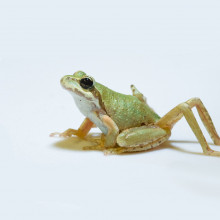
35:39 - Frogs' legs, anyone?
Frogs' legs, anyone?
with Professor Pieter Johnson, University of Colorado, Boulder
You may have heard of parasites influencing host behaviour, but they can go one step further, and even manipulate their bodies. In the mid-1990s there was a flurry of reports from the western USA of frogs being found with severely deformed limbs. 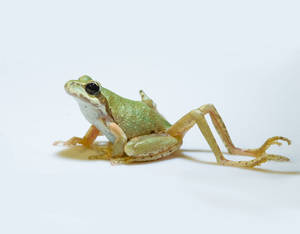 Pieter Johnson, from the University Colorado, Boulder, was one of the scientists called upon to investigate, and he spoke to Chris Smith about what had caused this outbreak...
Pieter Johnson, from the University Colorado, Boulder, was one of the scientists called upon to investigate, and he spoke to Chris Smith about what had caused this outbreak...
Pieter - One of the main causes turned out to be parasite infection. Essentially, there is this tiny flatworm parasite, no bigger than the period at the end of a sentence that would attack tadpoles while they were developing in ponds. This would lead to severe limb deformities. We would find frogs with 5 or 6 extra limbs, some frogs with no hind limbs at all, others with bizarre webbing. It sort of prevented their limbs from being able to extend. In some parts of the country, we would find 50, 60, or even 100% of the emerging frog showing this severe crippling deformities.
Chris - Why was the parasite doing this to the frogs?
Pieter - Great question! So, this trematoda, this flatworm is called Ribeiroia ondatrae and the main reason it would do this is to reproduce of course. The main reason most organisms do just about anything. It turns out that Ribeiroia has this complex lifecycle. So frogs are only one of the many host that it infects and other animals that it'll infect include freshwater snails that are in ponds. And finally, birds - they get infected once they actually eat the deformed frogs. And so, it turns out that by crippling the frogs, by inhibiting their primary mode of locomotion, you're making them easy prey for the birds. So the birds will swoop down, they'll eat the frogs, they'll get infected by the parasite and it's there that the parasite actually gets to reproduce sexually. And then you have this brilliant system of dispersal because birds fly across the landscape. Essentially, when they defecate, they're dropping out the eggs of the parasite all over the landscape.
Chris - And they then make their way back to the nearest pond and a snail that's in the pond, that will pick them up.
Pieter - That's exactly right.
Chris - How did you, as the scientist involved in investigating these flurries of deformed frogs, actually start piecing all these together to work out what was going on?
Pieter - Mostly by making a lot of mistakes I would say was the best strategy. So, we ruled a lot of things out. I started working on this when I was an undergraduate student. Essentially, what tried to do is combine careful field surveys of where these deformities were occurring, with laboratory examinations of the animals and then finally, experiments. What you find is that if you bring the water in from the ponds where these deformities are occurring, that water doesn't cause deformities in frogs in the lab. If you actually raise the offspring of deformed frogs, those too are not showing any deformity. So, we were zeroing in on something in the environment that was attacking them during early development.
One of the key observations was that almost all of the ponds where we were seeing this really severe deformities supported this very particularl type of snail. It's called a ramshorn snail. It turns out that that's the key snail that this parasite needs to support its infection. So, once we'd started to make those connections, we actually brought the parasite and the snails into the laboratory and then you can expose tadpoles to even really small numbers of parasites - 3, 4, maybe as many as 10 of these tiny parasite and quickly, you see them attacking the limbs. They show a very specific distribution no matter where you put them on the tadpole that migrate all over the place until they find the limbs. And then they produce these very powerful enzymes that essentially allow them to burn their way into the tadpole's tissue, right where those limbs are trying to grow. Sure enough, if you do this in the laboratory, you get the animals with the extra limbs, with the missing limbs, with the severe skin webbings. You can essentially reproduce all of those same deformities that you see in nature.
Chris - How do you think parasites evolved to do that because it's such a complicated process of being able to target the snail then target the growing limbs of a tadpole, have the right enzymes to do it and then ultimately make your frog get eaten by a bird so that you can complete lifecycle. That's so many steps of evolution. How on Earth did that happen?
Pieter - Yeah, that's a great question. Most of the evidence suggests that if you look at these flatworm parasites that they probably started out as parasite of snails. And then they progressively added a host onto their lifecycle. Some of the reasons to do this are, maybe you end up adding the tadpole first. But it turns out that your frog gets eaten as it happens to many frogs and many tadpoles. Over time, the parasites have basically developed this ability to survive predation. That they are somewhat unkillable by those digestive enzymes produced by something like the bird. And so, this has one for focusing on being a snail parasite, to being a snail plus frog and then maybe being a snail, frog as well as a bird parasite.
The advantages are obvious in terms of that extra dispersal ability you have. You can suddenly crisscross the continent and travel thousands of miles inside a bird. And then in terms of the frog component, I think the big challenge faced there is that if your frog lives to ripe-old age and never gets eaten by a bird then the parasite dies with it, without ever getting to reproduce. So, you can imagine how that puts enormous selective pressure on the parasite to find ways, or to have selection operating, to find ways to make sure that frog dies and then it dies the way the parasite needs it to.
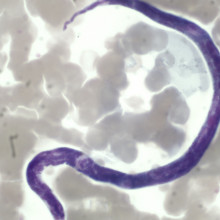
41:58 - Parasites tricking the immune system
Parasites tricking the immune system
with Professor Rick Maizels, University of Edinburgh
How do hosts attempt to fend off parasitic infections? We're not completely 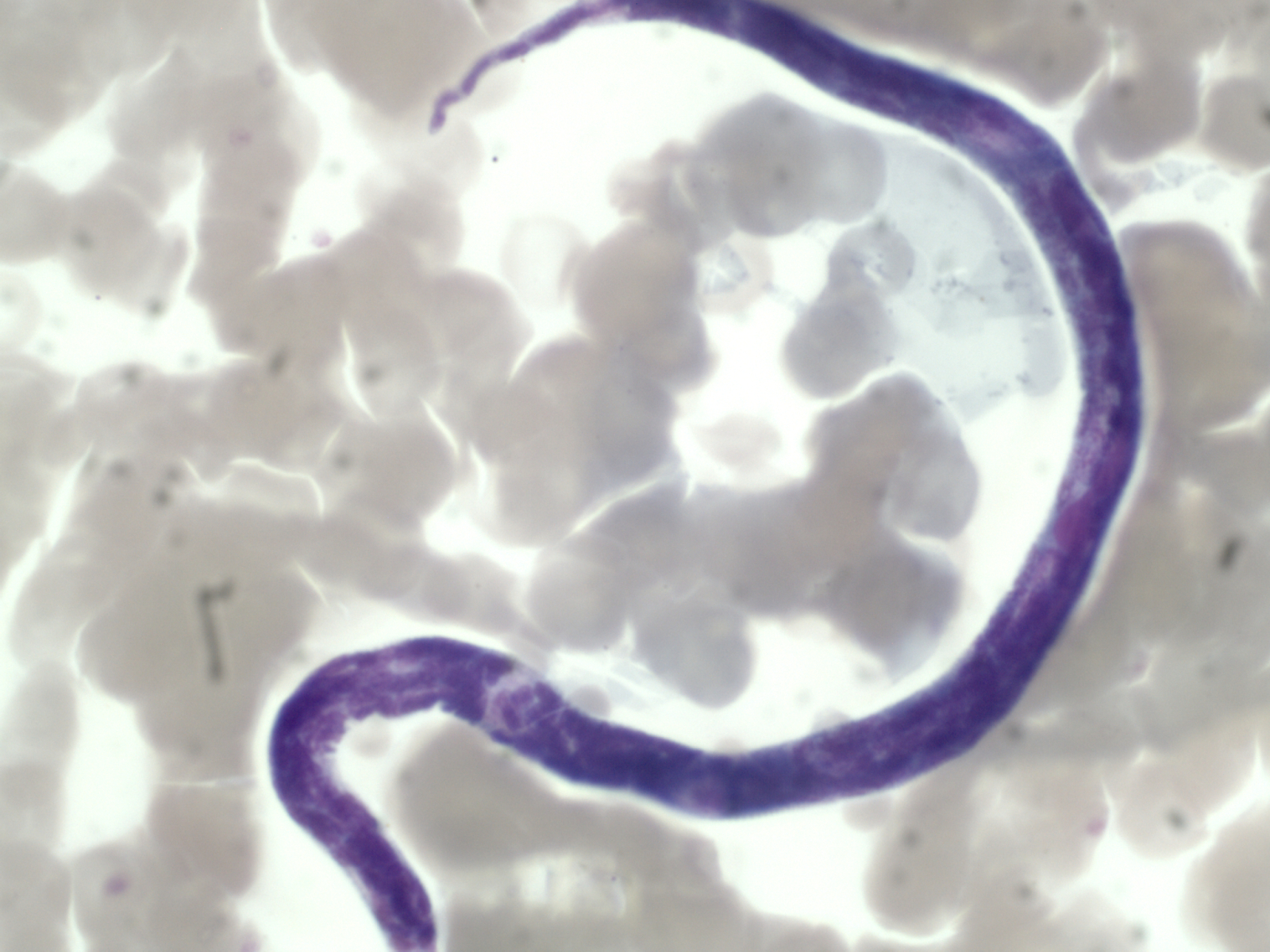 defenceless against these attackers- animals have evolved an immune system to help protect themselves. And parasites have, in turn, evolved counter-measures to enable them to slip under our immune radar. How does an animal's body try to fend off attack from parasites? The University of Edinburgh's Rick Maizels studies how they work, as he explains to Ginny Smith...
defenceless against these attackers- animals have evolved an immune system to help protect themselves. And parasites have, in turn, evolved counter-measures to enable them to slip under our immune radar. How does an animal's body try to fend off attack from parasites? The University of Edinburgh's Rick Maizels studies how they work, as he explains to Ginny Smith...
Rick - Well, it's a big job. If you think of a phagocyte that can engulf a bacteria, that's not possible with a parasite that's 1,000 times bigger than the cell itself. So, the job of the immune system is to mobilise massive swarms of cells to surround the parasites and this seems to be conducted and orchestrated by the T-cell population, effector T-cells that makes cytokines that activate these swarms of cells.
Ginny - And I guess it must be quite different if you're trying to attack a parasite that's in the blood, say, like the malaria one versus a tick or something that's living on the body.
Rick - Yes. I think to exclude an ectoparasite is a somewhat simpler job for the immune system than dealing with something in the heart of the bloodstream.
Ginny - So, your body is sending these cells to attack the parasite. What do they actually do to it to kill it?
Rick - This is what we're working on at the moment. One idea is that they lay siege, they surround the parasite, they may deposit toxic proteins around the parasite, but they may also withdraw nutrients from the environment. And so essentially, starve the parasite to death.
Ginny - I imagine that the parasites have evolved ways to try get around it. So, what are they doing to counter our attack measures?
Rick - Well, very much so. Every parasite has its own sort of strategy but the ones we've found repeatedly coming up in both human parasites and in lab models is to pretend that the parasite is a little bit like our own body. To do this, it recruits an interesting set of T-cells which are the opposite of the ones I mentioned called the regulatory T-cells. We call them the health and safety officers of the immune system. They make sure that the immunity doesn't get out of hand. So, they exploit this by producing a molecule very like our own, which drives these regulatory T-cells and switches off the immune system.
Ginny - So, they're effectively pretending to be part of our own body so that we don't attack them.
Rick - Absolutely. They re-write rules of the immune system to their own advantage.
Ginny - Has that changed the way our immune systems respond in general?
Rick - Well, we think this leads on a little bit to what you were mentioning about whether the immune system overshoots in the absence of parasites because our body is tuned to expect parasites as part of our normal environment.
Ginny - So, we've been talking mainly about parasites in the blood but we mentioned things like head lice and that sort of thing as well. Is there anything that our bodies can do to try and avoid those kinds of critters?
Rick - Well, we have certain specialised cells. The one type is called basophiles which home-in on the skin where there's an ectoparasite and again, probably, toxic proteins are produced and the site of biting quickly becomes inimical to the ectoparasite that then has to leave.
Ginny - Is that why it can be so itchy when you've got a bite? Is it actually our own body's defences causing that itch?
Rick - In some cases, that will be the case. In other cases, the itch for example to a short-lived mosquito bite is an after effect and doesn't actually protect us from the vector.

45:57 - Therapeutic parasites
Therapeutic parasites
with Dr Henry McSorley, University of Edinburgh
 Humans have been playing host to parasites for generations, but in modern times our obsession with sterility means that we're living without many of these "old friends". So could there be a downside? Henry McSorley is from the University of Edinburgh explained to Chris Smith why an absence of parasites might be the cause of the increase of modern allergies...
Humans have been playing host to parasites for generations, but in modern times our obsession with sterility means that we're living without many of these "old friends". So could there be a downside? Henry McSorley is from the University of Edinburgh explained to Chris Smith why an absence of parasites might be the cause of the increase of modern allergies...
Chris - With Rick is Henry McSorley who is also from the University of Edinburgh. It's fair to say that this sort of cat-and-mouse game between parasites and our immune system has been going on for generations. But in modern times, our obsession with sterility means that we're actually living without many of what we could regard as old friends. So, might there be a downside to this? What do you think, Henry?
Henry - Yeah, absolutely. The evidence for this comes from areas where parasitic infection is still very common. When we look at populations infected with parasites, they tend to have much lower levels of diseases such as allergic asthma, whereas in this country, as you were saying, improvements in hygiene and sanitation have resulted in our really eradicating parasites over the last kind of hundred years or so, and over that same time period, we suffered an epidemic of allergy. So, researchers are calling this the hygiene hypothesis, that we're too clean and this has led to us all being prone to hyperactive immune responses.
Chris - Henry, how could we disentangle the effects of a sterile lifestyle and an obsession with bleach and avoiding bugs like the plague alongside the absence of parasites because might it not be that the exposure to chemicals in our environment that we use to clean our environment are what are causing the allergy and it's nothing to do with the fact that we're now not parasite-laden because, as Mark Viney was saying earlier, actually parasites pretty much are harmful. They're stealing from us.
Henry - Well, that's true. I think all of this kind of correlative work, you know, correlation doesn't imply causation, really has to be tested. And that's really what we're trying to do by being able to control when the parasites infect. Looking at the development of allergy, we can show much more directly that parasites can prevent the development of allergy and maybe be exploited to create new medicines against allergy.
Chris - Indeed. How are people trying to do that?
Henry - Well, what we're doing is trying to move away from using actual parasitic infection. So, there are lots of clinical trials ongoing where people are being infected deliberately with live parasites to try and control diseases such as inflammatory bowel disease or allergic asthma. However, we don't know exactly how these parasites work and what they're actually doing. So, our approach to it is that we think it would be a much better idea to try and find the exact molecules that parasites are using to affect the immune system and the immune pathways that they're acting on. And then we could perhaps develop these parasite molecules as new medicines for these diseases.
Chris - So, you could swallow a pill rather than a worm which sounds a bit more "stomachable", doesn't it?
Henry - Yeah, absolutely.
Chris - Where are we on the way to doing that because it's pretty tricky to try and understand what that particular intestinal worm that is living hooked on the side of your intestine is doing to your immune system at the tiny level that these things are operating at isn't it?
Henry - Yeah, absolutely. So, the approach that we've taken is collecting all of the products that parasites release into the host and which we think contains some molecules which will modulate the host immune response. We collect these molecules and we find that by administering them, we can replicate many of these suppressive effects of the parasitic infection.
Chris - But is the site also important? Because if you have a parasite that has evolved to live latched onto your gut and deliver these things at the right sort of concentration at the right sort of level and in the right sort of way, it might not be just a simple case of, we'll copy those chemicals and then inject them or something. They might not work.
Henry - Absolutely and that's a really good point. And this is what we're finding. It may not be a single molecule. it may be a mixture and it very much actually depend on the dosing, yeah, exactly where you administer it. so, if you're looking at trying to affect colitis, maybe a pill would be a great idea. But if you're trying to affect asthma, then maybe something that you actually inhale straight into the lungs.
Chris - What sorts of disorders are you going for or what sorts of conditions do you think might be amenable to this sort of approach?
Henry - Really any disease where a hyperactive immune response causes problems. So, these are diseases such as allergy which I think is very common in this country, allergic asthma. But also, inflammatory bowel disease and also autoimmunity. There's clinical trials of infection going on in all of these diseases. But as I say, we're trying to create defined medicines to actually treat them.
Chris - And how far have you got?
Henry - We have got from the level of finding that we have whole parasite products, real mixture of stuff which can suppress things like asthma in mouse models. And we've, just in the last year actually, gone down to the level of having a couple of individual proteins which we can produce in a highly purified form in the lab, and these can replicate many of the suppressive effects of parasitic infection. So, these could be perhaps directly developed as drugs and in fact recently, just in the last month, we've shown that these molecules work directly on human cells in the lab in exactly the same way as they do in the mice. So, it seems that there's a very clear pipeline to make these into new medicines and put these into people.
Chris - Sounds wonderful. Congratulations! What about side effects or is there a downside to this?
Henry - Anytime you're talking about suppressing immune responses, there could obviously be side effects which would include increasing your susceptibility to infection or even to tumour surveillance so your immune system can stop you from having tumours progressing. However, what we're talking about in this sense especially in the asthma work is to try and tolerise people against inhaled allergens. These will be things like cat dander or pollen or whatever. So, you could administer these parasite products which are highly tolerogenic with your allergen that you want to tolerise against and hopefully, drive a tolerance state that would last for years and you could essentially cure allergic asthma.

52:07 - What parasites can I catch from my pets?
What parasites can I catch from my pets?
Pets are a potential source of parasites to people. Fleas, ticks, even mange mites are common on pets that don't receive preventives. So routine flea and tick control is a key part of responsible pet ownership.
Some intestinal parasites of pets also infect people including parasitic worms like Toxocara which can cause inflammation in the eye or in internal organs from migrating larvae that have been ingested or pet hookworms which induce an itchy rash after a larvae penetrate the skin from contaminated soil.
Pets might also be infected with protozoa like toxoplasma gondii in cats which can cause human disease and is of particular concern to pregnant women and people with weakened immune systems.
Most of these intestinal parasites are acquired from egg or larval stages in faecal contaminated soil or water rather than directly from the pets. But because dogs and cats often clean themselves with their tongue, pet kisses are usually not advisable. Not to be unduly disgusting here but we have likely all seen dogs and cats clean themselves or drink out of the toilet or practice similar behaviours.
Overall pet ownership has not been shown to post a direct risk of parasitic infection to people, but keeping pets parasite-free reduces environmental contamination with parasites. And so, limits infections in the overall community. With proper veterinary care, pets are safe and wonderful member of the family.










Comments
Add a comment